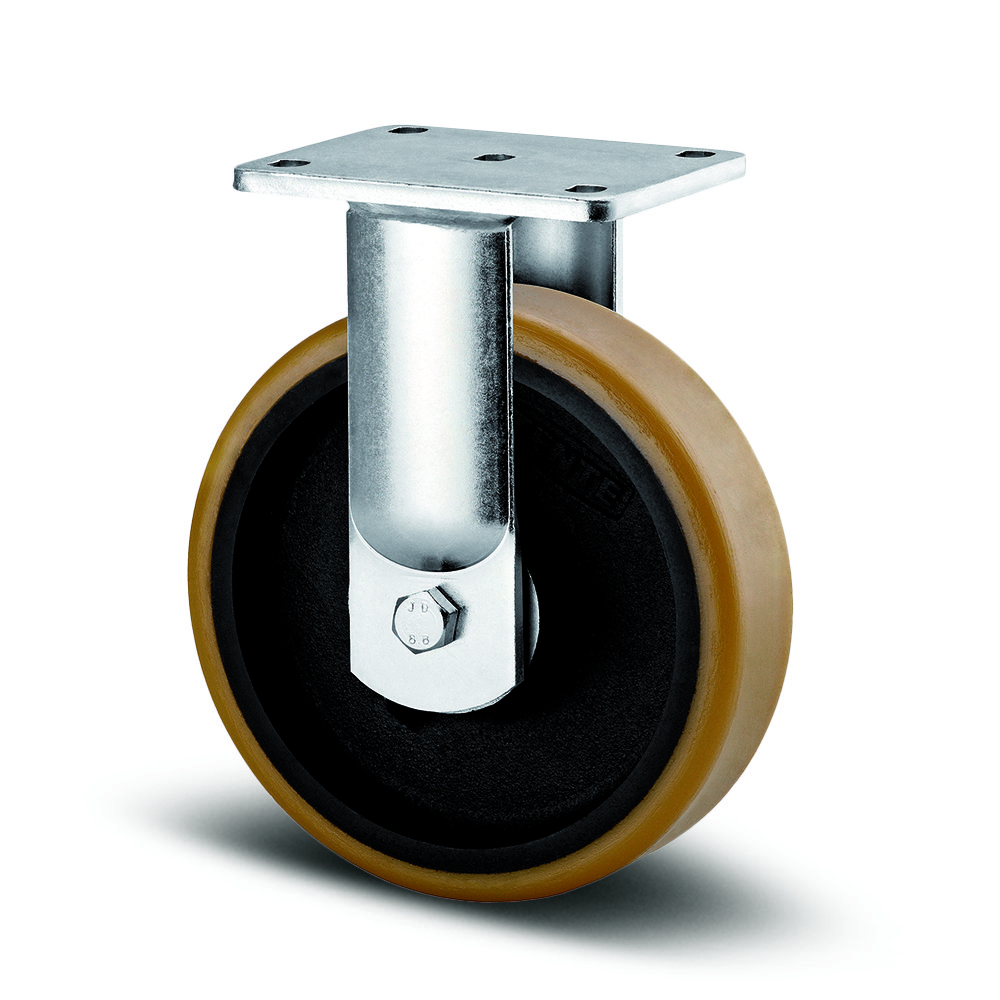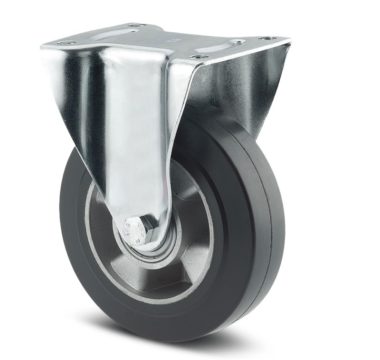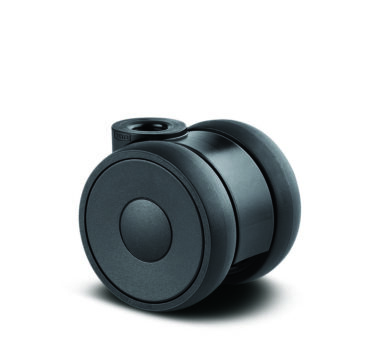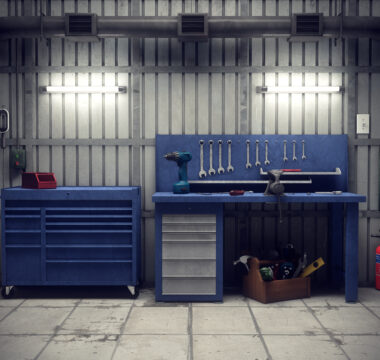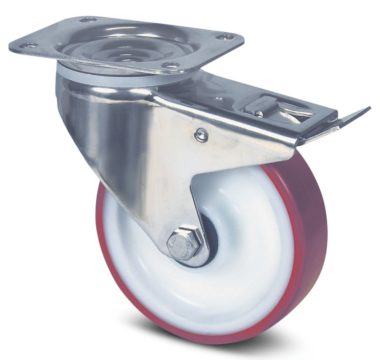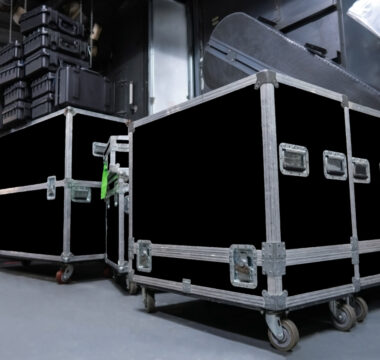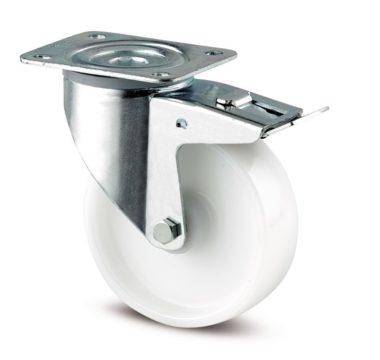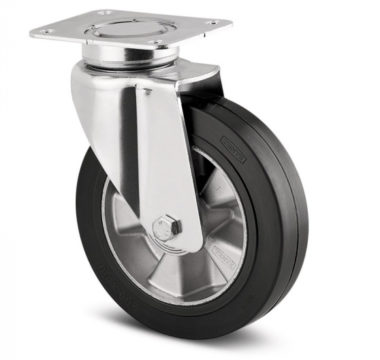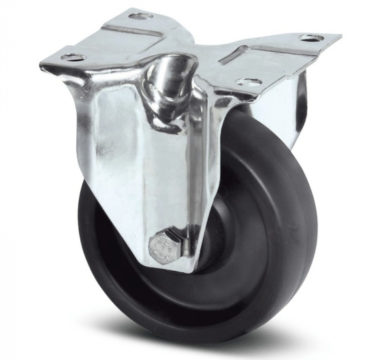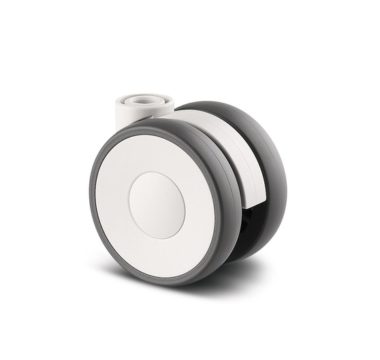Castor wheels are an integral component of many mobile units, from general-purpose office chairs to highly specialised industrial machinery. They’re designed to provide mobility and can support varying amounts of weight depending on their design and the material used. Understanding the capacity of castor wheels helps to ensure safety and efficiency in their application as you can avoid going over the recommended weight range. However, there’s quite a lot that goes into understanding how much weight a castor wheel can hold. So, in this article, we will learn how to determine the load capacity of castor wheels, the factors influencing their capacity and more.
Determining the Load Capacity Needed
When it comes to finding the right castor wheel for your needs, load capacity is an important metric to get right. The load capacity of a castor wheel refers to the maximum weight that the wheel can support when in motion.
To determine the load capacity needed for your specific application, start by calculating the total weight of the load that the castor wheels will carry. This includes the weight of the platform itself plus any additional load it will carry. Once you have this total, divide it by the number of castor wheels to distribute the weight evenly. For example, if a platform weighs 40 kg and uses four castor wheels, each wheel must support at least 10 kg.
It’s important to note that the calculated load capacity per wheel should include a margin of safety to account for any uneven distribution of weight or unexpected additional loads. Manufacturers typically provide a maximum load capacity for each wheel, but it is prudent to operate below this maximum to enhance durability and safety.
What Determines the Load Capacity of a Castor Wheel?
Several factors affect the load capacity of a castor wheel, including the tread width, castor diameter, and tread profile. Each of these components plays a role in how well a wheel can support and distribute the weight placed upon it.
Tread Width
The tread width is the width of the wheel that makes contact with the ground. Wider treads distribute the load over a larger area, reducing the pressure on the floor and the wheel, which can help prevent damage to both. They also tend to provide better stability and roll more smoothly under heavier loads. Therefore, a wider tread is typically capable of supporting more weight.
Castor Diameter
The diameter of the castor wheel affects how easily it can move over different surfaces and obstacles. Larger diameters generally allow for easier movement over uneven surfaces and can reduce the rolling resistance, making it easier to move heavier loads. This is why larger wheels are often seen on industrial and warehouse equipment where heavy loads are common.
Tread Profile
The tread profile refers to the shape of the wheel’s surface that contacts the ground. Different profiles can affect how the weight is distributed and how the wheel interacts with the floor surface. Flat profiles offer more stability, as they have a larger contact area with the ground, while rounded profiles may reduce friction and make the wheels easier to manoeuvre.
Hard Vs Soft Castor Wheels
The material composition of a castor wheel significantly influences its performance, especially under load. Hard wheels, typically made of materials like nylon or hard rubber, offer higher load capacities and are more durable under heavy weights. They perform well on smooth, flat surfaces where impact resistance is less of a concern.
In contrast, soft wheels are usually made from materials like polyurethane or soft rubber, which provide better shock absorption and quieter operation. These wheels are preferable on uneven or soft surfaces and can prevent damage to delicate flooring. However, they may have lower load capacities compared to hard wheels and can wear out more quickly under heavy loads.
Key Considerations
When selecting and using castor wheels, several key considerations must be kept in mind to ensure optimal performance and safety. Understanding the difference between dynamic (moving) and static (stationary) loads is a great place to start. Castor wheels typically have different ratings for these conditions, with static load capacities usually being higher than dynamic. Always check the specifications for both to avoid overloading the wheels during use.
Even distribution of weight across all castors is essential for maintaining stability and preventing undue stress on any single wheel. Uneven weight distribution can lead to premature wear, wheel failure, and potential accidents. Similarly, exceeding the specified weight limits of castor wheels can lead to numerous problems, including wheel deformation, failure, and breakdown of the wheel material. This not only compromises the safety of the equipment but also increases the risk of injury to users.




